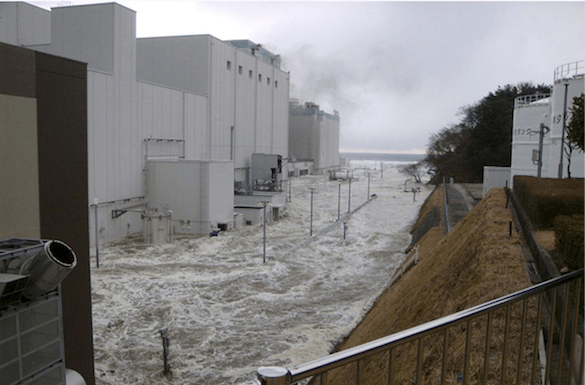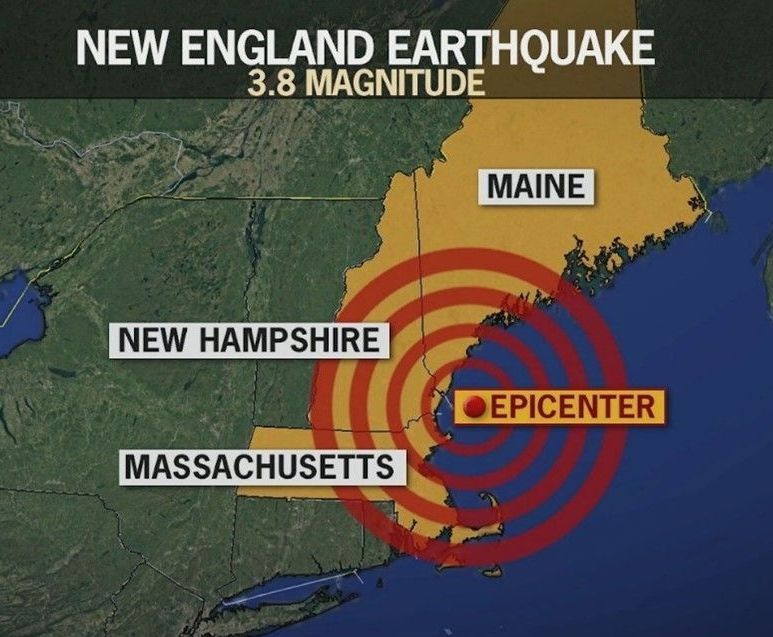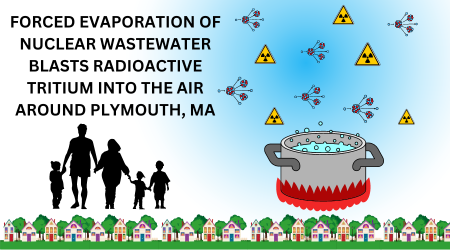Blog Post
Storm Surge
- By Natalie Hildt Treat
- •
- 19 Sep, 2018
What are nuclear power plants doing to address threats from severe weather?

With hurricane season upon us and the Brunswick nuclear plant in North Carolina seriously impacted
by flooding from Florence, experts and neighbors to the world's nuclear reactors are again looking at the increased risks posed by what were once called "500-year storms."
Since the accident at Fukushima, (pictured above), the world's coastal nuclear plants have installed more powerful pumps, upgraded power supplies, and installed waterproof doors and movable flood barriers. But is it enough?
According to researchers from Stanford University, Seabrook Station is one of four nuclear plants in the US deemed to be at high risk from coastal flooding. Seabrook is located just 2 miles inland, and was constructed 20 feet above sea level.
As John Vidal writes for Ensia, "Flooding can be catastrophic to a nuclear power plant because it can knock out its electrical systems, disabling its cooling mechanisms and leading to overheating and possible meltdown and a dangerous release of radioactivity. Flooding at the Fukushima Daiichi plant in Japan as a result of the March 2011 tsunami caused severe damage to several of the plant’s reactors and only narrowly avoided a catastrophic release of radioactivity that could have forced the evacuation of 50 million people." Continue Reading Vidal's article
Since the accident at Fukushima, (pictured above), the world's coastal nuclear plants have installed more powerful pumps, upgraded power supplies, and installed waterproof doors and movable flood barriers. But is it enough?
According to researchers from Stanford University, Seabrook Station is one of four nuclear plants in the US deemed to be at high risk from coastal flooding. Seabrook is located just 2 miles inland, and was constructed 20 feet above sea level.
As John Vidal writes for Ensia, "Flooding can be catastrophic to a nuclear power plant because it can knock out its electrical systems, disabling its cooling mechanisms and leading to overheating and possible meltdown and a dangerous release of radioactivity. Flooding at the Fukushima Daiichi plant in Japan as a result of the March 2011 tsunami caused severe damage to several of the plant’s reactors and only narrowly avoided a catastrophic release of radioactivity that could have forced the evacuation of 50 million people." Continue Reading Vidal's article
C-10 Research & Education Foundation, Inc.
11 Chestnut Street
Amesbury, MA 01913
Phone: (978) 465-6646
Email: info@c-10.org
© C-10 Research and Education Foundation 2025 C-10 is a registered 501(c)(3) nonprofit. Tax ID/EIN #22-3117209.



